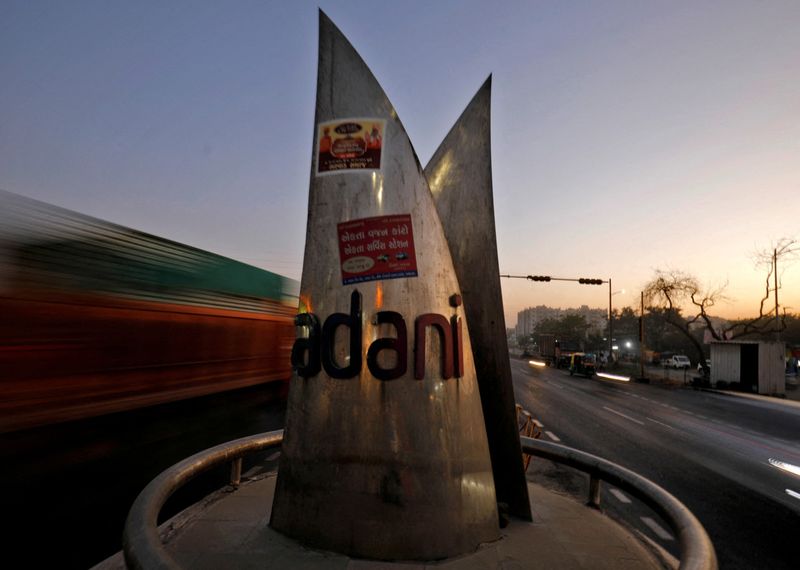[ad_1]
When Zhen Hua 15 — a heavy load cargo carrier sailing from the East China Sea — unloads at Vizhinjam port this Sunday, it’ll do more than just set down the site’s first gigantic cranes. It’ll also put India on the map for world’s biggest container ships.
Located near the southernmost tip of the country, the Vizhinjam transshipment container port — the first of its kind in India that will be inaugurated on October 15 — will allow India to grab a bigger slice of the international maritime trade currently dominated by China. It will also bolster its aspirations to be an alternative manufacturing hub by reducing logistics costs for cargo coming to and from the country.
The new terminal will be another feather in the cap of Gautam Adani’s conglomerate, which faced a scathing short seller attack in January alleging corporate malfeasance — charges the Adani Group has denied. With a dominance that already spans ports, mines, airports and power utilities, Vizhinjam will further cement the billionaire’s status as India’s infrastructure king.
The proximity to the international shipping routes that accounts for 30 per cent of global cargo traffic and a natural channel that goes up to 24 meters below the sea makes Vizhinjam an ideal hub for some of the world’s biggest ships to call in. Until now, the biggest container ships have been skipping India because its harbours weren’t deep enough to handle such vessels and docking at neighbouring ports such as Colombo, Dubai and Singapore.
Transshipment refers to transferring cargo from an original ship to another, bigger mother ship at a port on the way to the cargo’s final destination.
Adani Ports’ footprint
The much-awaited deep-sea port along Kerala’s scenic coastline has been developed by Adani Ports and Special Economic Zone Ltd. in collaboration with the local state government. Adani Ports, India’s largest private sector port operator with a 30 per cent market share, is also developing Israel’s Haifa port and plans to build a hub in Vietnam, as part of its expanding global footprint.
“The Indian Ocean is 50 per cent of sea trade,” said Chakri Lokapriya, chief investment officer at TCG Asset Management Co. in Mumbai. “The Vizhinjam port with its natural advantages will improve operating margins for Adani Ports.”
Poor shipping connectivity has hindered India’s integration into the global value chain, the Reserve Bank of India said in a 2022 report. India’s container traffic was only 17 million twenty-foot equivalent unit (TEUs) in 2020 versus China’s 245 million TEUs, according to a February 7 statement from the ports ministry.
The Narendra Modi-led government told the parliament that may change soon.

‘World’s Factory’
“The upcoming ports at Vizhinjam (Kerala) and Vadhavan (Maharashtra) have natural drafts in excess of 18 meters that would enable ultra large container and cargo vessels to call on the ports thereby boosting the efforts to make India the world’s factory” by improving the container and cargo traffic, the ministry said in the statement.
Vizhinjam port, according to Adani Ports website, will offer a quick turnaround of vessels including Megamax container ships. It will have a capacity of 1 million TEUs, in the first phase at an investment of 77 billion rupees ($925 million). About 6.2 million TEUs will be added in the subsequent phases.
Still, running transshipment container terminal won’t be an easy feat, even for a company with as rich an experience as Adani Ports that has already faced fishermen protests at this site. A rival facility in Vallarpadam, operated by Dubai Ports World, has been dogged by procedural delays.
The transshipment hub also needs to be connected by a network of road and rail links to warehouses and factories in the hinterland. Lack of such an arterial support “can be the Waterloo” for any port, said Mathew Antony, managing partner of Aditya Consulting, an advisory specialising in infrastructure, ports and logistics.
Strategic Location
The federal government is working on a Maritime India Vision 2030 that seeks to develop world-class mega ports, transshipment hubs and modernise infrastructure at an estimated investment of 1.25 trillion rupees.
As large ships become increasingly more vital to Europe and China trade, India can embed itself in that route, given its strategic location between the Suez Canal and the Strait of Malacca.
India’s current container traffic is less than 10 per cent of China’s but if the Vizhinjam port is able to beckon more ships, it’ll give India — and Adani Ports — a stronger footing in global maritime trade.
[ad_2]
Source link
